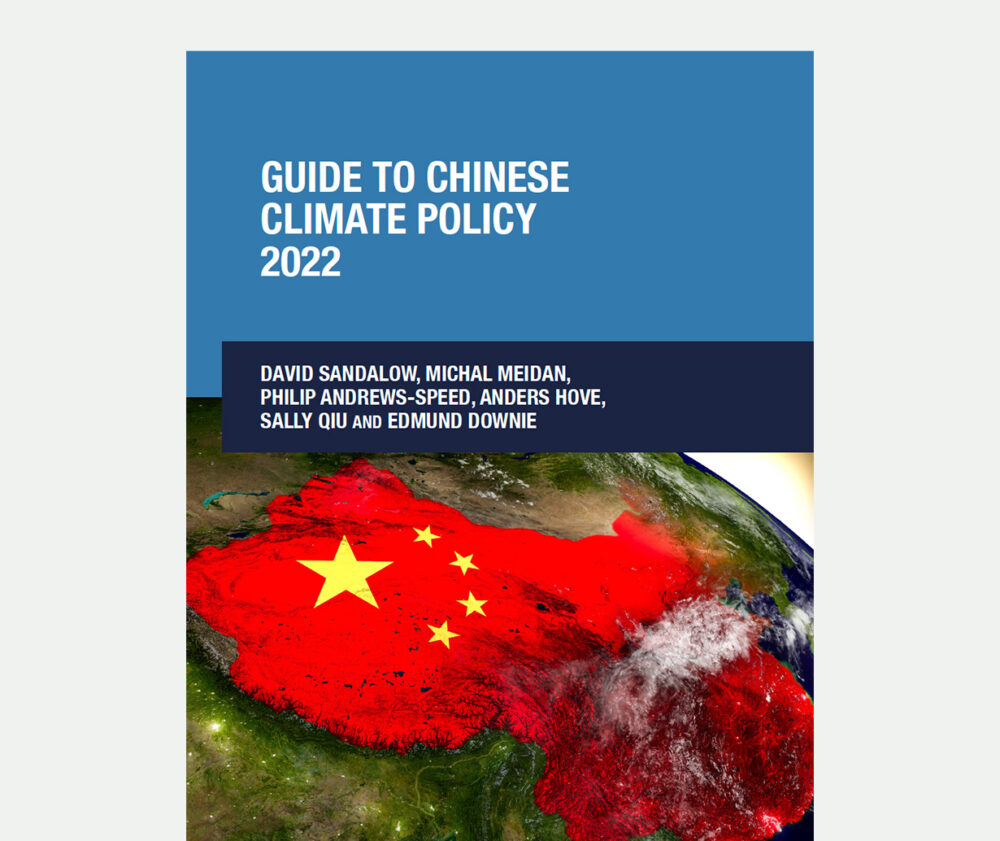The Belt and Road Initiative has significant climate impacts. Several studies help estimate the nature and scale of those impacts.
- Chen et al. (2021) estimates 12 Gt of CO2 emissions over the roughly 40-year life of overseas power plants that were financed by either Chinese policy banks or greenfield FDI and in operation or under construction as of 2019. (12 Gt over 40 years implies an average of roughly 0.3 Gt/year.) The study estimated 10.4 Gt of CO2 emissions from Japanese-financed plants and 3.4 Gt of CO2 emissions from US-financed plants.104
- Springer et al. (2021), estimating emissions intensities (CO2 emissions per unit of output) for coal power plants operating in Asia in 2018, find that plants with Chinese financing or EPC contracting tended to have modestly lower average emissions intensities and higher energy efficiency than plants without Chinese participation. They project 11 Gt CO2 of lifetime emissions over 40-year lives from plants with Chinese financing or contracting (0.275 Gt/year), against 25 Gt CO2 for plants without Chinese involvement (0.625 Gt/year).105
- Tao et al. (2020) chart the expected lifetime emissions of 458 international power plant projects across 15 BRI countries that signed engineering and construction contracts with Chinese firms between 2005–19. (The 15 countries selected comprised two-thirds of the value of “newly signed project-contracting contracts” along the BRI in 2017.) Their data suggests an estimated 18 Gt of emissions from these plants over lifetimes of around 35 years (roughly 0.5 Gt/year).106
- New hydropower projects can also drive heat-trapping gas emissions through accompanying land-use changes: for instance, reservoir flooding that prompts methane releases from decomposing organic matter. Measuring these impacts can be very difficult, and footprints vary substantially across projects. Räsänen et al. (2018) use statistical models to produce “tentative” estimates of emissions from around 140 existing and planned hydropower reservoirs in Southeast Asia, where China has been a major hydropower developer. Their results suggest that most dams have similar emissions footprints to other renewables, but that a minority may be similar to fossil fuels in their impacts.107
Cancellations of coal power projects that had been announced or under construction over the past few years may affect these projections.108 Still, the studies ¬suggest that infrastructure developed by Chinese investors and contractors abroad over the past two decades will likely produce gigatonnes of carbon emissions in the coming years.
The BRI may also have emissions impacts through a variety of other channels that are more challenging to measure. Infrastructure development may prompt deforestation that removes carbon sinks and a new power plant may increase economic activity that leads to greater demand for carbon-intensive goods such as steel and cement.109 Indeed, growing trade with the developing world over the past two decades has increased the share of Chinese emissions “embodied” in trade with BRI countries––that is, emissions associated with the production of exported or imported goods.110 Tian et al. (2019) attempt to measure the impact of the BRI upon Chinese embodied emissions from international trade; they estimate an increase of 0.18 Gt through 2016 from higher exports to BRI countries, largely reflecting cement and steel trade.111
The climate impacts of new BRI projects during the 2020s could look very different from the prior two decades. Coal was the largest target of outbound power-sector investments during the BRI’s early years. Xi Jinping’s “no new coal” pledge, amidst mounting project cancellations, confirms that these conditions will change. More broadly, BRI outbound economic activity fell significantly in 2020–21 and its post-COVID recovery remains uncertain. This retrenchment offers the opportunity to take up the promise of a greener BRI; doing so would have enormous positive impacts for global decarbonization.
References

